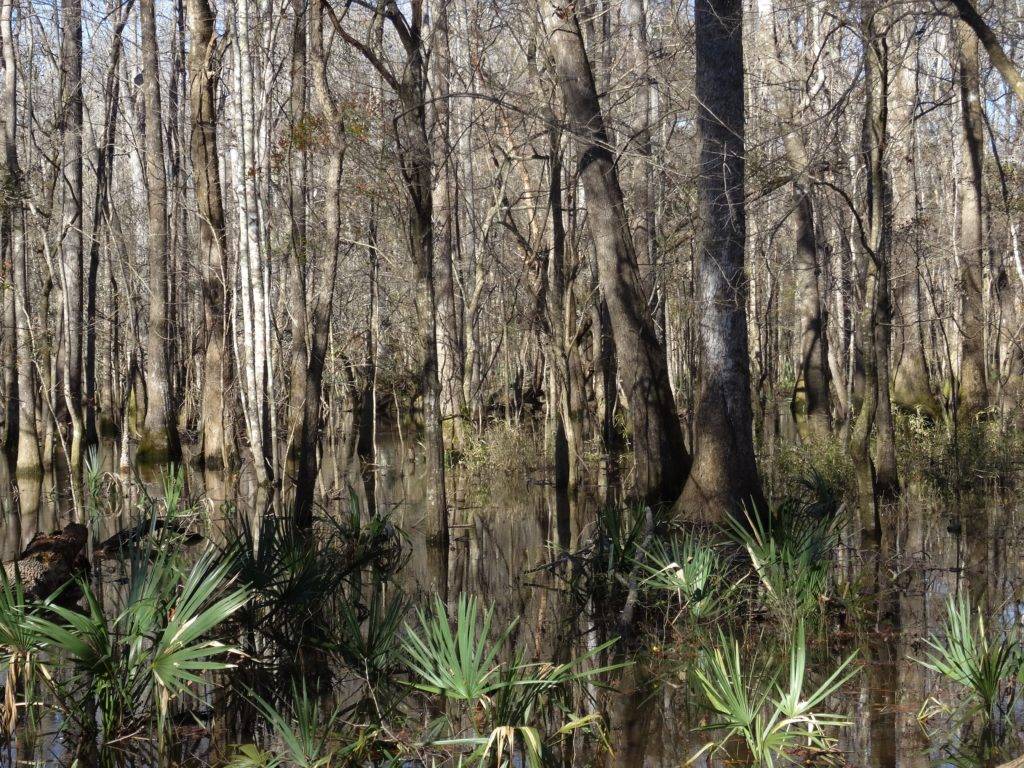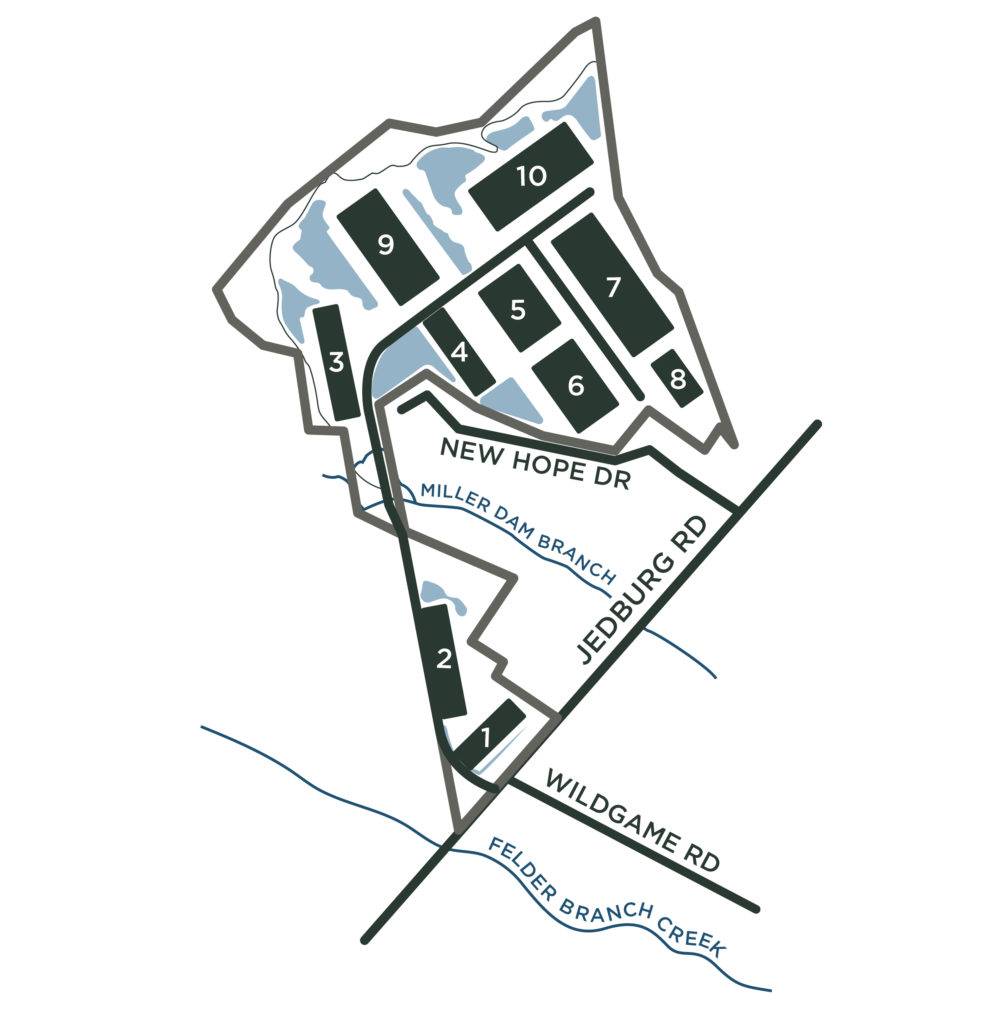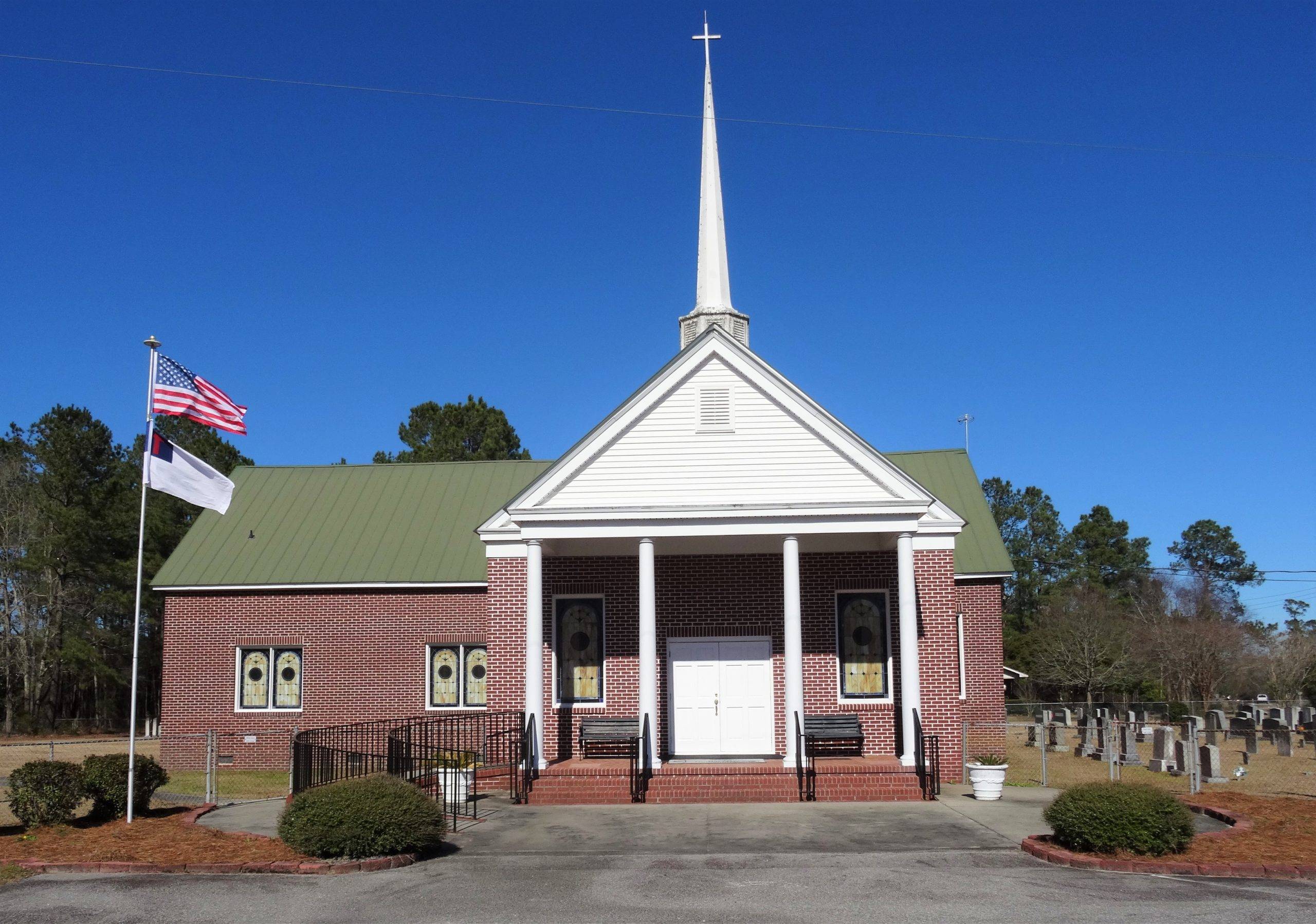Project
Berkeley Charleston Tradeport
The Berkeley Charleston Tradeport is an industrial warehouse complex off Jedburg Road in the New Hope community. The facility will ultimately include ten massive warehouses that will total 4.9 million square feet of buildings in addition to extensive paved roads and parking areas. The project will require nearly 13 acres of wetlands associated with Wassamassaw Swamp to be filled.
In partnership with the South Carolina Environmental Law Project (SCELP), we submitted a letter of opposition in July 2020 detailing the extensive negative impacts this project would have on the environment as well as the New Hope community.
Community Impacts
The Berkeley Charleston Tradeport will undoubtedly take a major toll on the quality of life for New Hope residents. The project will immensely increase the amount of truck traffic on Jedburg Road, causing more congestion and public safety concerns. The industrial complex will completely encircle the longstanding residences in New Hope Estates, substantially increasing light pollution with perpetual lighting, noise pollution with round-the-clock industrial operations, and—perhaps most importantly—air pollution with hundreds of semitruck trips in and out of the site every day. Additionally, the project will surround the historic New Hope United Methodist Church founded in 1852, before the Civil War. The church cemetery contains historic gravesites dating to the 1880’s, and the church grounds are home to a community center and ballfield. In many ways, New Hope United Methodist Church is the heart of New Hope, which has been a quiet, rural community for decades. Surrounding it with an industrial complex of this scale risks diminishing the community’s character and culture.
Wetland Impacts
Wetlands provide many important services to the environment and the public. They act as natural water purifiers, prevent excessive erosion and sedimentation, and store water during storms, effectively reducing flood damage and lessening the risk of flash floods caused by major storms. This is extremely important as the South Carolina coast continues to experience frequent costly weather events such as, most recently, Hurricane Isaias, which caused $5 billion worth of damage in the United States, the Caribbean and Canada.
Wetlands also provide habitat for many species of plants and animals. This includes various threatened and endangered species. About one-third of all such species in the United States rely on wetlands for their survival. However, other animals such as deer, sunfish, and migratory birds like mallards and wood ducks rely on wetlands for survival. Just because a specific wetland is not home to an endangered species does not mean it is not vital to the overall health and productivity of our environment.
The Berkeley Charleston Tradeport will destroy nearly thirteen acres of valuable wetlands in Wassamassaw Swamp, eradicating wildlife habitat and compromising the area’s capacity to withstand major storm events.

Impacts Across the Watershed
While the direct destruction of wetlands in itself is certainly concerning, the full impact of the Berkeley Charleston Tradeport will actually be much greater. The project will affect the entire watershed of Miller Dam Branch and could even cause issues with flooding and sedimentation downstream along the Ashley River. We recently commissioned an analysis by Robinson Design Engineers, an award-winning team of hydrologists and engineers. Their study found that the hard surfaces of the buildings and parking lots would increase annual runoff volume by 60%. That’s the equivalent of 235 additional Olympic size swimming pools running into Wassamassaw Swamp and downstream to the Ashley River every year. Further urbanization in the watershed, which includes new housing developments along Jedburg Road and an extension of the Nexton development along Sheep Island Road will also contribute further to this increased runoff. Robinson Design Engineers’ analysis also revealed that developers plan to install a culvert within a FEMA floodway, which requires special regulatory review and permitting. It is clear that the developers of this site have not considered the full impacts this project would have on the environment or the community.
A Mutual Compromise
In the Spring of 2021, we worked with the New Hope community and the developers to reach a compromise that addresses some of the community and environmental concerns with the project. In addition to preserving roughly 40 acres of wetlands onsite and purchasing wetland mitigation credits from an approved mitigation bank, the developers agreed to establish a substantial fund for land protection in the Wassamassaw/Great Cypress Swamp watershed. This will ensure that while some wetlands associated with Wassamassaw Swamp are being lost, many more can be permanently protected. The developers also worked directly with community members to establish measures that address some of the potential impacts to their way of life, including maintaining 100ft buffers around residential properties and providing funding for a new community center on Jedburg Road. Developers also agreed to yearly meetings with the community throughout the construction of the project so residents have an opportunity to share any unforeseen concerns in the future. While this certainly can’t address the concerns of everyone in the community, we believe it is a fair compromise that acknowledges and addresses known community concerns and will help offset environmental impacts.


